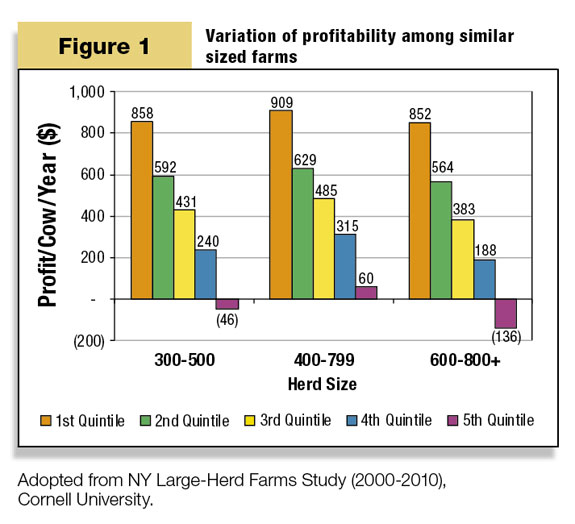During the first half of my career, I worked as a dairy nutritionist primarily in Ohio and the eastern Corn Belt, and believe that experience has greatly improved my ability to consult in the business and financial side of dairy operations. I now occasionally have the opportunity to work with my former nutrition clients and am reminded of a conversation that took place many years ago. I walked into the office of one of my prospective nutrition clients for an appointment and found him very agitated. The conversation went something like this: DAIRYMAN: Greg, it may not be a good day for us to talk.
ME: Oh, why is that?
DAIRYMAN: My veterinarian was just here, and I’m pretty frustrated. He basically told me that everything that’s been going wrong lately is a result of my management. If I had a dollar for every time my feed guy, veterinarian or field rep told me that, I’d be a very rich man.
ME: Well, if it’s not management – what is it?
I have to admit that before I offered that last comment, I looked around to make sure there wasn’t a baseball bat lying nearby. The dairyman had a very puzzled look on his face, but once I smiled, he relaxed long enough to let me explain myself.
Although I’m confident he didn’t totally agree with my position when I left that appointment, he did at least understand that there was a lot of truth in the statement.
Management is commonly defined as …
• The act or art of managing; the conducting or supervising of something (as a business)
• Judicious use of means to accomplish an end
• The collective body of those who manage or direct an enterprise
… and it has five primary components:
1. Planning
2. Organizing
3. Staffing
4. Directing
5. Controlling
My definition of management is simply a collection of decisions made (or many times, not made) by the principals of a business. I don’t think I have made a public presentation in the past four or five years without mentioning the importance of business management and leadership, if for only a few minutes, regardless of the topic on which I have been asked to present.
Independent of size, location, Federal Order or co-op, differences in management are the primary drivers of dairy profitability. Let me demonstrate one of the reasons I advocate this position.
Cornell Cooperative Extension collects annual year-end financial information from approximately 90 New York dairy farms that have 300 cows or more – which comprise the data found annually in the Dairy Farm Business Summary, NY Large Herd Summary.
Each year, after all the financials have been received and analyzed, the packets are placed in a stack in order of size, smallest to largest. The stack is next divided into three equal piles which are grouped by herd size. Over the past 10 years or so, the first pile of farms ranged from 300 to 500 cows, the second pile from 400 to 800 cows and the last with the largest farms of 600 to 800-plus cows.
Each of the three piles is then arranged in order of profitability as measured by net farm income (NFI) per cow, per year. Finally, each of the three piles is divided into five smaller piles representing the most profitable 20 percent, second-most profitable 20 percent, etc.

Figure 1 demonstrates the compiled results of this analysis averaged over a nine-year period from 2000 through 2008. I use this graphic in many of my presentations and ask the audience: What stands out to you?
Almost instantly, someone will raise their hand and describe the difference in income between the most profitable 20 percent of farms and the least profitable 20 percent (or quintile) as surprising or even staggering. The spread in profitability for the smaller farms is $904, $850 for the second group and $988 for the larger farms.
Do you notice anything else? Average profitability among the three size groups is very similar. The smaller farms averaged $415 NFI per cow per year, the second groups averaged $480 and the larger farms averaged $370.
It is interesting to note that, while probably not statistically significant, the larger farms actually had the lowest average NFI – it was the middle group that was the most profitable. It would seem that management , not herd size , had a greater impact on profitability.
I encourage you not to get too hung up on the size of the farms in this study or the fact that these farms are in New York versus Wisconsin or Idaho or California or any other region of the country. This dynamic would be repeated in any similar study of dairy farms, regardless of location or size.
While this may be a topic which generates many opinions, it is clear to me that management and leadership are significant points of distinction between and among dairy farm businesses which transcend all demographics.
Leading and managing may not always be as much fun as working with your hands, and they certainly aren’t easily mastered skills, but as Stephen Covey suggests: “Management is efficiency in climbing the ladder of success; leadership determines whether the ladder is leaning against the right wall.”
Is your ladder leaning against the right wall? PD

Greg Squires
Manager/Supervisor
Dairy Enterprise Services





